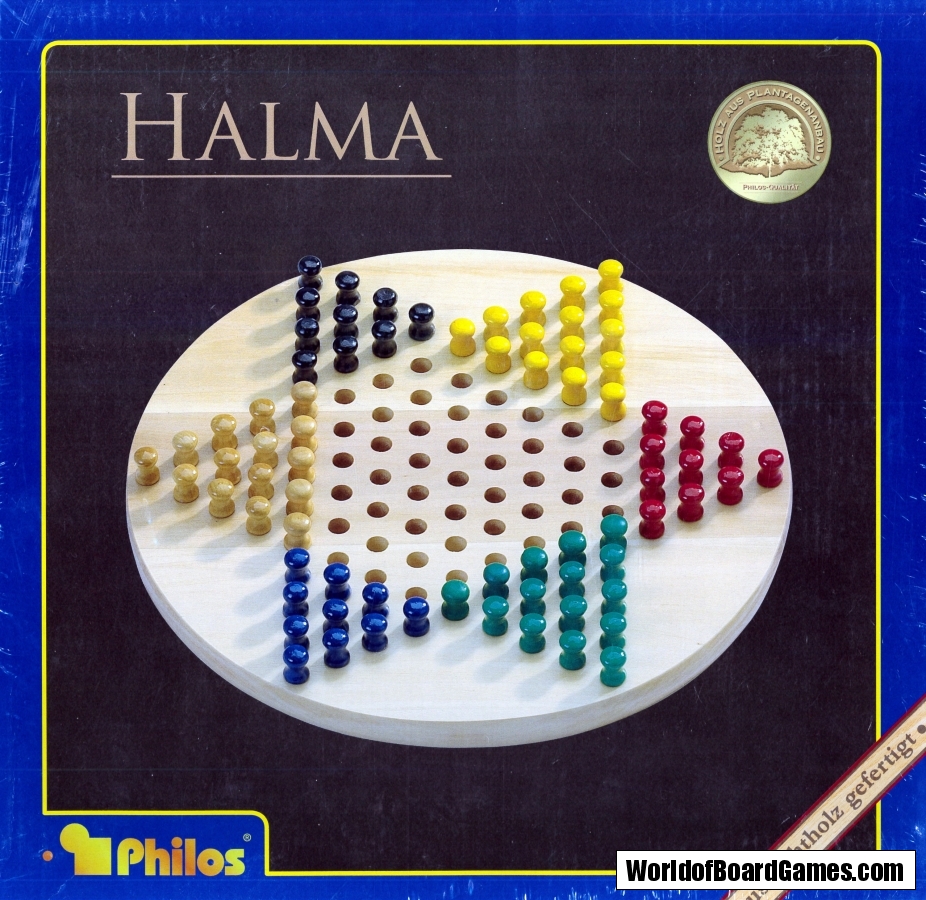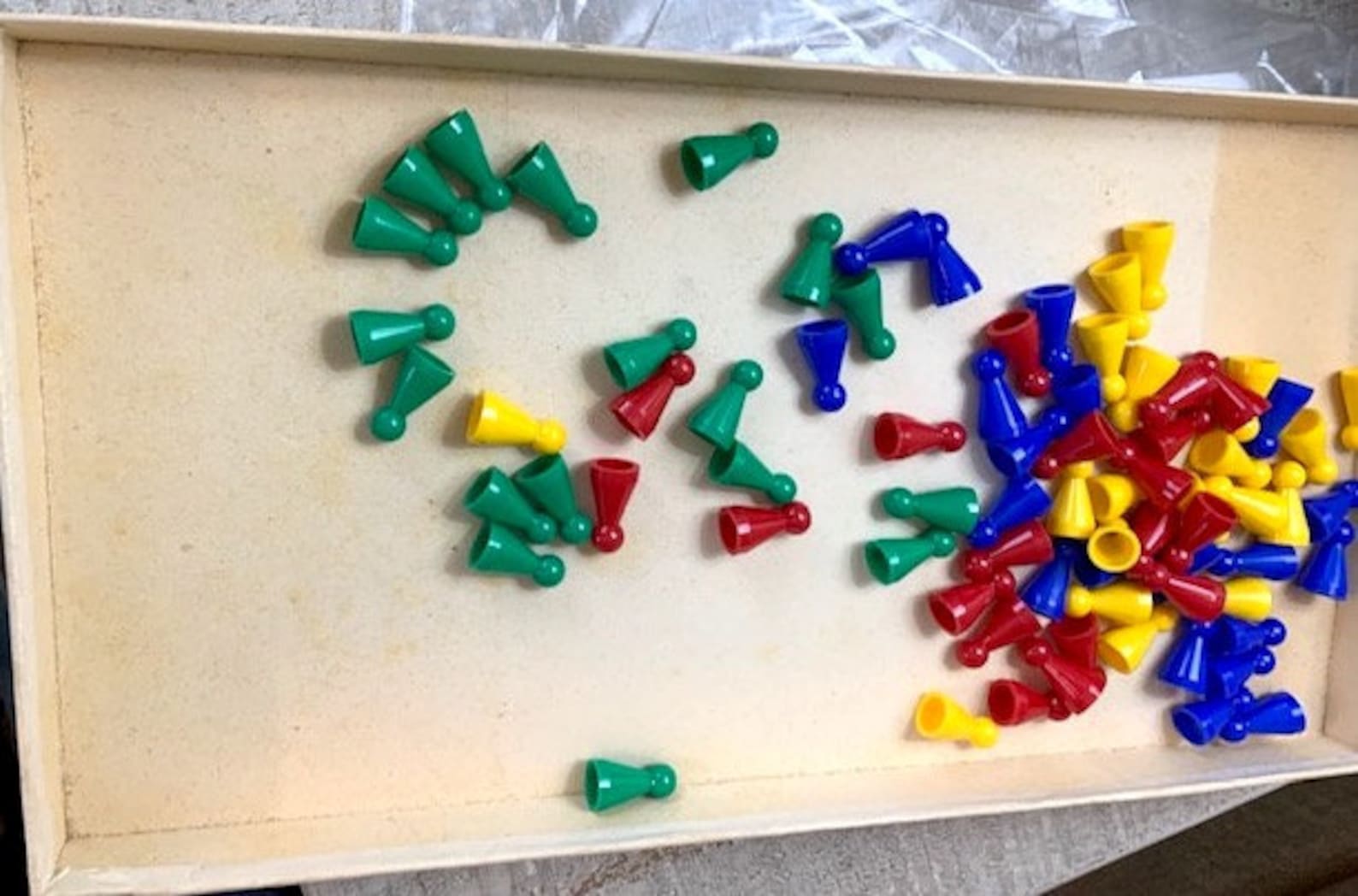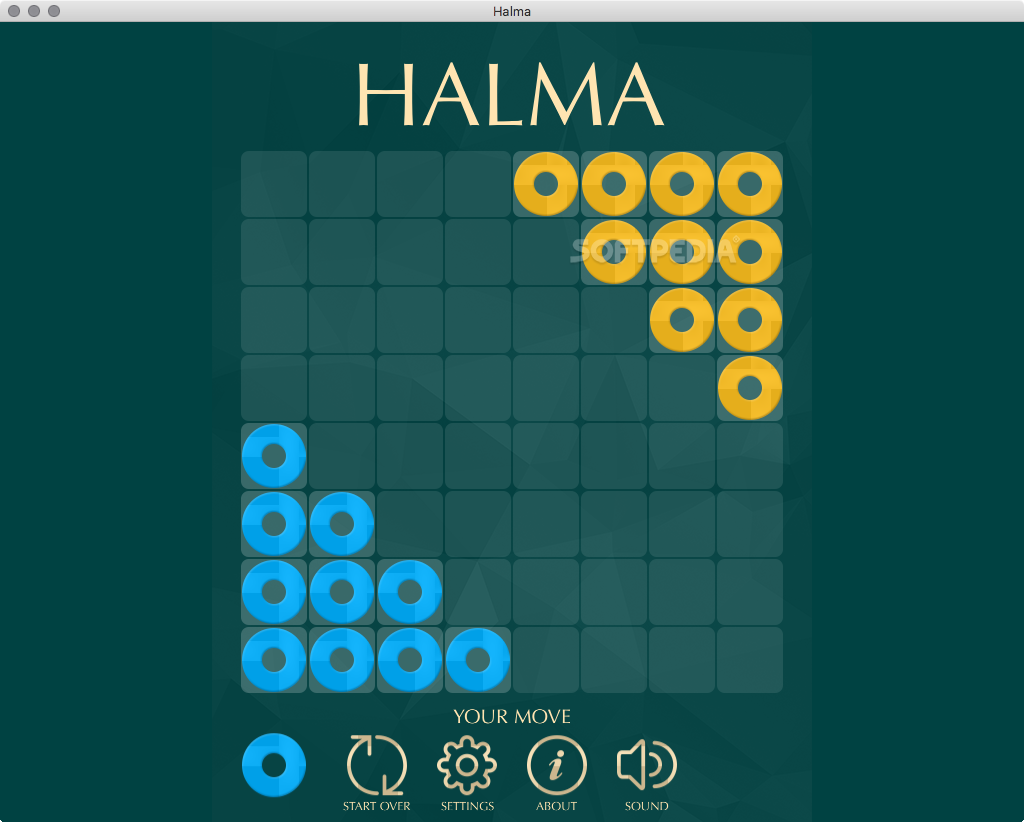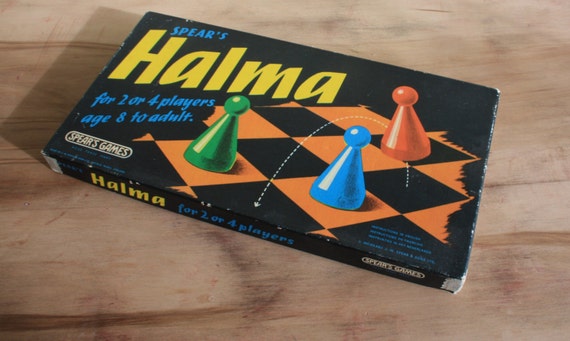
In comparison with many board games, Halma has a beginning, a middle, and an end. In non-electronic versions, the number of moves is not normally counted. Fast-advancing players occasionally attempt to blockade an opposing piece, but this tactic can backfire if the other player is aware of it. Some sites implement a rule variation stating that a player automatically loses if they still have a piece in their start region after a certain number of moves (typically 30 for the 8x8 game, 50 for the 10x10 game). There are various on-line versions on the internet, usually for two-player, turn based play.

There are also 8x8 and 10x10 board variations, either of which is adequate for two players and they have 10 and 15 pieces per player, respectively.

The name is misleading, since the game has no historical connection with China, nor is it a checkers game. Chinese checkers, a variant of Halma, was originally published in 1892 as Stern-Halma (German for "Star Halma") and later renamed upon marketing to the United States to appear more exotic.The mechanic of jumping pieces is reminiscent of draughts (checkers) but differs in that no opposing pieces are ever captured or otherwise withdrawn from the board nor is jumping compulsory.Otherwise, play proceeds clockwise around the board.If the current play results in having every square of the opposing camp occupied by one's own pieces, the acting player wins.Once a piece has reached the opposing camp, a play cannot result in that piece leaving that camp.After any jump, one may make further jumps using the same piece, or end the play.The piece which was jumped over is unaffected and remains on the board.Place the piece in the empty square on the opposite side of the jumped piece.An adjacent piece of any color can be jumped if there is an adjacent empty square on the directly opposite side of that piece.One or more jumps over adjacent pieces:.Place the piece in an empty adjacent square.Each player's turn consists of moving a single piece of one's own color in one of the following plays:.Pieces can move in eight possible directions (orthogonally and diagonally).Players randomly determine who will move first.Simple wooden pawn-style playing pieces, often called "Halma pawns" For four-player games played in teams, the winner is the first team to race both sets of pieces into opposing camps. To win, you must move all your pieces into the diagonally opposite camp. The board starts with all the squares of each player's camp occupied by a piece of that player's color.Each player has a set of pieces in a distinct color, of the same number as squares in each camp.Each of the four corners of the board is a camp. For four-player games, each player's camp is a cluster of 13 squares.For two-player games, each player's camp is a cluster of 19 squares.Each player's camp consists of a cluster of adjacent squares in one corner of the board.A game may be played by two or four players.Squares are adjacent horizontally, vertically or diagonally.The board consists of a grid of 16x16 squares.Setup for four players (when played in teams, teammates sit in opposite corners) On each turn, a player either moves a single piece to an adjacent open square, or jumps over one or more pieces in sequence. The goal is to transfer all of one's pieces from one's own camp into the camp in the opposing corner. The game is played by two or four players seated at opposing corners of the board.

Piece colors are typically black and white for two-player games, and various colors or other distinction in games for four players. Pieces may be small checkers or counters, or wooden or plastic cones or men resembling small chess pawns. The gameboard is checkered and divided into 16x16 squares. His inspiration was the English game Hoppity which was devised in 1854. Halma (from the Greek word ἅλμα meaning "jump") is a strategy board game invented in 1883 or 1884 by George Howard Monks, an American thoracic surgeon at Harvard Medical School.

Board with "camps" marked for two players (blue) and four players (red)


 0 kommentar(er)
0 kommentar(er)
